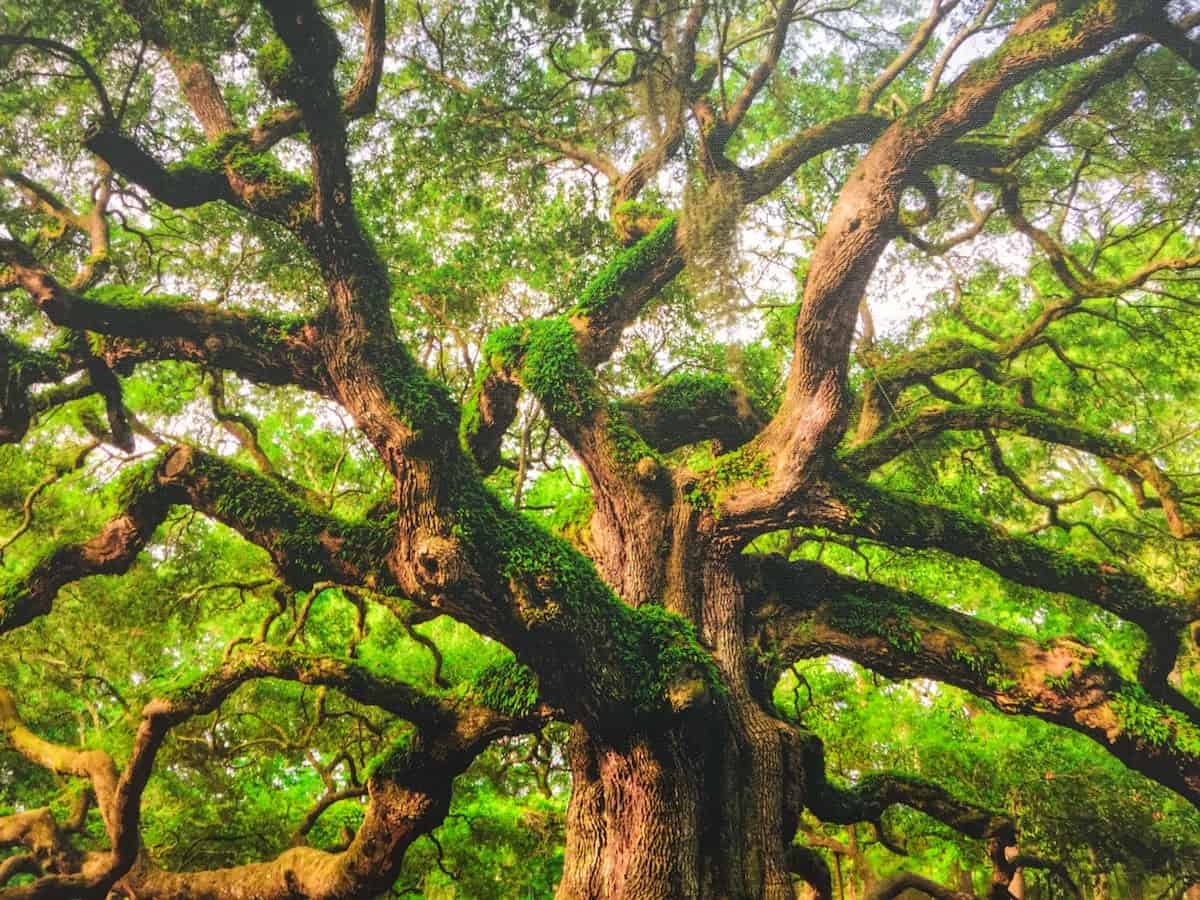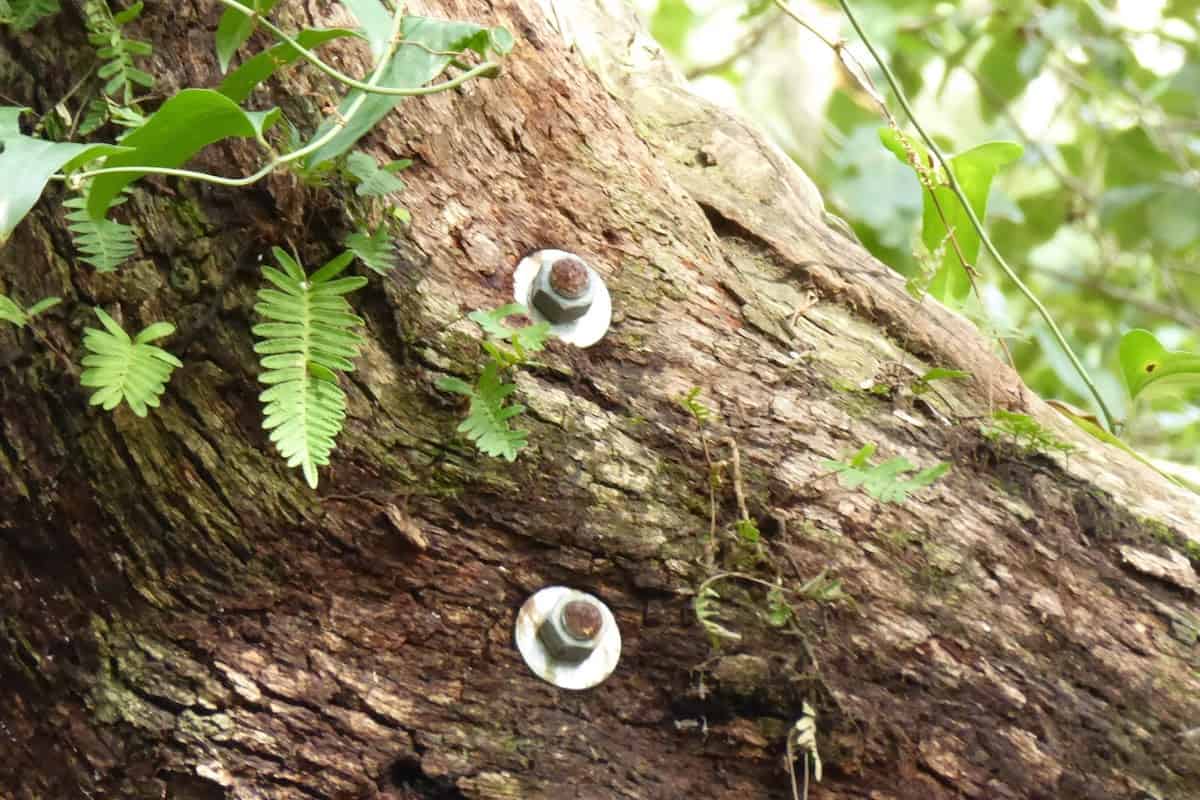Visiting the Angel Oak Tree in Low Country

The magnificent Angel Oak Tree is one of the oldest live oak trees east of the Mississippi.
Paying a visit to the iconic Angel Oak Tree on Johns Island, South Carolina, feels very much like making a pilgrimage. Some 400,000 visitors travel from many miles away each year—sometimes from other states—to visit the three-acre park that sits beside an unpaved road.
The park itself is totally ordinary except that it houses one of the most amazing trees you will ever see, the Angel Oak.
A southern live oak (genus: Quercus virginiana), this magnificent tree is considered one of the oldest east of the Mississippi. While no one is sure of its precise age, it is estimated to be at least 400 years old. Some claim it is more than 1500 years old. Its breadth is more impressive than its height.
A testimony to resilience, the tree has been ravaged by nature over the centuries, including Hurricane Hugo in 1989, but still manages to survive. More recently, the Angel Oak also miraculously escaped Hurricane Florence, which hit the Charleston area in 2018.
The tree did get some publicity after Hurricane Florence, however, which may have attracted more tourists to take a look. Allstate Insurance ran TV advertisements to raise funds for Hurricane Florence Recovery efforts featuring the Angel Oak Tree as a symbol of resilience. Some Reddit users took offense to the use of the iconic South Carolina tree for this purpose since it didn’t actually suffer any damage.

After parking your car, approaching the Angel Oak by foot is humbling due to its gargantuan size.
- It is 65 feet tall with a circumference of more than 25 feet.
- Its largest limb is more than 89 feet long, so heavy that it rests along the ground along with many other large limbs.
- The canopy creates more than 17,000 square feet of shade.

Almost like a centenarian, the Angel Oak tree needs support just to maintain its balance. But the various beams, rods, and braces that prop it up are subtle and don’t detract from its grace and beauty.

Young children run around the massive tree and between its heavy limbs while everyone else snaps photographs and selfies that use humans as props to put the tree’s size in perspective. Although visitors aren’t allowed to sit on any part of the tree, you can visit it up close and even hug it.
Owned by the City of Charleston since 1991, the legendary tree is named after the original owners of the property, Martha and Justis Angel. Its care is overseen by the Charleston Parks Conservancy.
HowStuffWorks has detailed the tree’s history. In 1717, the tree and the land upon which the tree stands were given to Abraham Waight, a plantation owner, as part of a land grant. The tree stayed in the same family for four generations until the land was transferred to Martha W.T. Angel and Justus Angel as part of a marriage settlement.
Local legend suggests that the ghosts of former slaves still hang out around the tree.

IF YOU GO
- Located at 3688 Angel Oak Road on Johns Island, the Angel Oak Tree at Angel Oak Park is about one-half hour (around 12 miles) from downtown Charleston.
- The park is open Monday-Saturday from 9-5 and 1-5 on Sunday and is closed on holidays. There is no charge for admission and parking is also free. A small gift shop, picnic area and several outhouses are nearby on the park grounds.
- While your visit is bound to be memorable, a half hour is more than sufficient time to spend at the park because aside from the tree, there isn’t much else to see. With the area receiving an average of 75 days of rain a year, the grounds and small parking area are often muddy. Although you’ll be eager to take photos, the DO NOT TOUCH signs placed all around the tree aren’t especially photogenic.
- Don’t expect peace and solitude. Whenever you go, you are likely to encounter other pilgrims.
- The busiest time to visit is generally in the middle of the day.
- Permits are required for weddings, wedding or engagement photoshoots, and other special events.
All photo credits: Jerome Levine, unless otherwise noted.
THE ANGEL OAK TREE IN PHOTOSPHERE (Use buttons on the right for a 360-degree rotation)
Also on More Time To Travel:
The Cuisine of Charleston: A Unique Mix of History And Geography
Save to Pinterest!!







I am surprised by its sheer size!! What a lovely out-of-the-way destination for anyone visiting Charleston!
We were visiting friends on Johns Island and they took us here.
Amazingly beautiful tree. Thanks for sharing.
Glad you enjoyed reading about the Angel Oak.
This reminds me of the large Banyon Tree in Lahaina, Maui that has grown to such a size it is a tourist attraction as well. Beautiful photos – interesting post, Irene!
Wonder if there are any other tree attractions? Would make a nice collaborative post:-)
Wow, what a beautiful tree! I can see why the Angel Oak draws pilgrims – it’s truly inspiring!
I would love to visit the park on Johns Island and see Angel Oak Tree – magnificent!
I love old trees like this, so wonderful they are taking efforts to preserve the entire tree for future generations
In addition, Noel, the acorns from this one have produced other nearby trees!
I’m a tree freak, I must see this tree!
Hi Irene,
I have been to this magnificent tree and you are right — as soon as you step out of your car, the tree draws you over to delight and gaze, take a million photos, (so many angles to explore!), and simply meditate under its canopy. After a good long time doing just that, we then walked away and sat at a picnic table, watching all the newbies arriving as we just had an hour before. We watched them as they gained the tree wisdom, too.
Thanks for your added facts and inspiration!
Josie
I’ve always been fascinated by the widespread oaks in this part of the country – will have to mske this pilgrimage!
Wow! Look at how huge that tree has grown! Hopefully it will just keep on living and growing…
What a fabulous tree! I will make a point to visit it when I’m in Charleston again later this spring.
Love the low country! The live oaks all along the sea islands are incredible.
Amazing! The Low Country is so rich in story, a lovely region. Your photos are terrific.
What a wonderful tree. I visited the world’s largest pohutukawa tree while I was in New Zealand and your article reminded me what a special place trees like this Angel Oak can be. If I ever finally get to South Carolina I’ll put Angel Oak on my to do list.
What a spectacular tree! I hope to see it in person one day.
Beautiful…
What a lovely spot Irene. We decided to go to Kiawah Island on our day outside of Charleston and it was beautiful also. I feel like we just scratched the surface of all there was to visit there and I can’t wait to get back and explore a little deeper.
You probably would have passed the road to the Angel Oak on your way!
What a magnificent old tree. I love old trees that have grown in their own direction over the years making an really compelling silhouette. I try to notice these as we drive past them on road trips and whenever possible stop to take a photo. So glad they’re preserving this one.